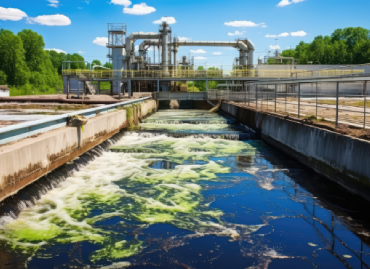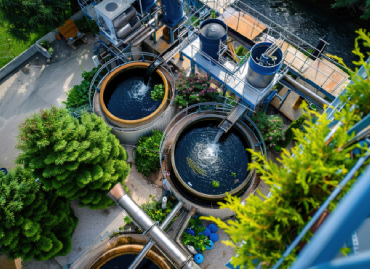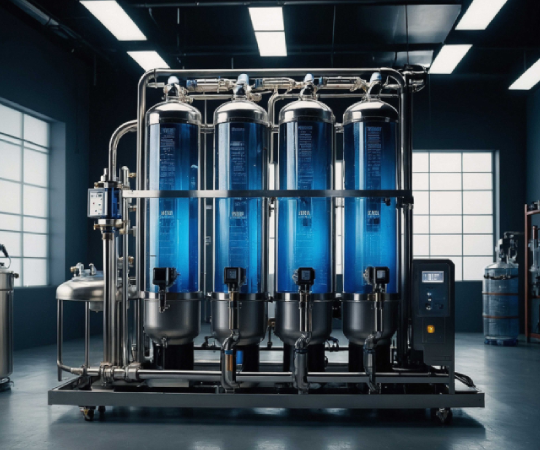- By Admin
- 06 Aug 2025
- WTP Plant
Efficient Water Treatment Systems for Public Spaces Promote Hygiene, Sustainability, and Eco-Friendly Infrastructure
Public places such as parks, railway stations, bus terminals, and tourist spots are essential to urban life, accommodating millions of people daily. In bustling cities like Mumbai, Pune, and Nashik, these areas are seeing an increasing number of visitors, placing considerable pressure on municipal utilities, especially water supply and wastewater management. As populations grow and tourism continues to thrive, public spaces face a dual challenge: meeting the rising demand for water while effectively managing the wastewater generated.
From basic sanitation needs to keeping public areas clean and aesthetically pleasing, water plays a crucial role in maintaining the functionality and appeal of these spaces. However, conventional water management strategies are becoming increasingly unsustainable. Public authorities are turning to modern water treatment systems, including Sewage Treatment Plants (STPs), Effluent Treatment Plants (ETPs), and Water Treatment Plants (WTPs), to address these challenges in a more eco-friendly and cost-effective manner.
"Water is not just a resource but a reflection of how we care for our environment. In public spaces, thoughtful water management not only ensures hygiene but also nurtures sustainability, protecting both people and ecosystems. Through innovative solutions like wastewater recycling, we can transform urban landscapes into sustainable havens for all."
Water Demands in Public Spaces: Functional and Aesthetic Needs
Water is required in public spaces for a wide variety of functions, including drinking water stations, public restrooms, food stalls, and sanitation of walkways. High-traffic areas like railway stations and tourist destinations often experience intense water demands for daily operations. For instance, restrooms, which are in constant use, require significant water supplies for flushing and washing. In addition, landscaping features such as gardens, fountains, and artificial ponds in parks and recreational spaces necessitate regular irrigation and maintenance.
Food courts, street vendors, and outdoor eateries rely on a steady supply of clean water for cooking and cleaning. Thus, the need for water is not only tied to sanitation but also to the upkeep of the environment, such as the aesthetic appearance of public spaces and their overall hygiene standards. Managing these diverse needs efficiently is critical for both the comfort of the public and the sustainability of urban ecosystems.


Wastewater Generation: A Complex Issue in Public Infrastructure
The activities that take place in public spaces also result in the generation of substantial wastewater, which, if not treated properly, can pose a significant environmental risk. Public toilets and urinals, for example, produce blackwater, which contains high levels of organic matter and pathogens. Food stalls and cafeterias generate greywater, which is contaminated with food scraps, oils, detergents, and other contaminants from cleaning and cooking. Furthermore, the cleaning of high-footfall areas such as markets, sports stadiums, and transport terminals requires water mixed with detergents and disinfectants. Even water features such as fountains and artificial lakes contribute to the problem by needing regular draining and refilling.
In addition to these common sources of wastewater, vehicle maintenance in public spaces such as bus stations or parking areas generates wastewater containing oils, grease, and chemicals. If untreated, these wastewater streams can clog municipal drainage systems, pollute rivers and lakes, and harm the surrounding environment.
The Importance of Proper Wastewater Treatment in Public Areas
To prevent the environmental damage caused by untreated wastewater, public spaces must implement robust treatment processes. Decentralised Sewage Treatment Plants (STPs) are increasingly being used in such spaces to treat wastewater at the point of generation. These plants use various methods such as physical filtration, biological treatment (using Moving Bed Biofilm Reactors or Sequential Batch Reactors), and disinfection to treat blackwater and greywater. Once the water has been treated, it can be reused for non-potable applications like flushing toilets, cleaning public spaces, and irrigating gardens.
In areas where food stalls and vendors are common, additional Effluent Treatment Plants (ETPs) are required to treat greasy wastewater. These plants incorporate specialised equipment like grease traps and chemical dosing units to remove contaminants effectively. By recycling treated water, public places can significantly reduce their reliance on fresh water, thus saving costs and reducing the pressure on municipal water supplies.
Technological Innovations Driving Water Reuse in Public Infrastructure
Technology plays a vital role in ensuring efficient water management in public spaces. Compact STPs equipped with Membrane Bioreactor (MBR) or MBBR technology are ideal for public spaces as they are highly effective and can be installed in confined areas. These advanced systems treat large volumes of wastewater efficiently, making them perfect for high-traffic locations like bus terminals, parks, and tourist attractions.
In addition, automated systems and IoT-based sensors are helping public authorities monitor water quality and plant performance in real-time. These technologies provide valuable insights into water consumption, potential leaks, and treatment plant efficiency. Furthermore, rainwater harvesting systems, integrated with WTPs, are increasingly being adopted in parks and public squares to supplement freshwater supply, reducing dependence on conventional sources.
Tailored Water Treatment Solutions for Public Infrastructure
We specialise in providing customised water treatment solutions for public infrastructure of all sizes. Whether for a city park, a crowded transit hub, or a tourist destination, our team designs and installs STPs, ETPs, WTPs, and RO systems tailored to the unique needs of each location. By assessing water consumption patterns, space availability, and wastewater discharge volumes, we ensure that our solutions are both efficient and sustainable.
Our treatment systems are compact, low-noise, and energy-efficient, making them ideal for public spaces where aesthetics and minimal disturbance are essential. Post-installation, we provide ongoing support and maintenance services to ensure the continued performance of these systems. By helping public bodies optimise water usage, we contribute to smarter, greener cities that are both environmentally responsible and economically viable.
Summary And Conclusion
Sustainable water management in public places is essential for ensuring both the functionality and aesthetics of urban spaces. By integrating advanced water treatment technologies like STPs, ETPs, and WTPs, municipalities can meet rising water demands while significantly reducing wastewater generation and conserving resources. These systems not only help maintain hygiene but also contribute to environmental protection by reusing treated water for non-potable applications. Adopting smart water solutions is key to creating more sustainable, resilient public infrastructure that can support growing urban populations and tourism. Custom-designed water treatment solutions ensure that public spaces remain clean, safe, and eco-friendly.































































